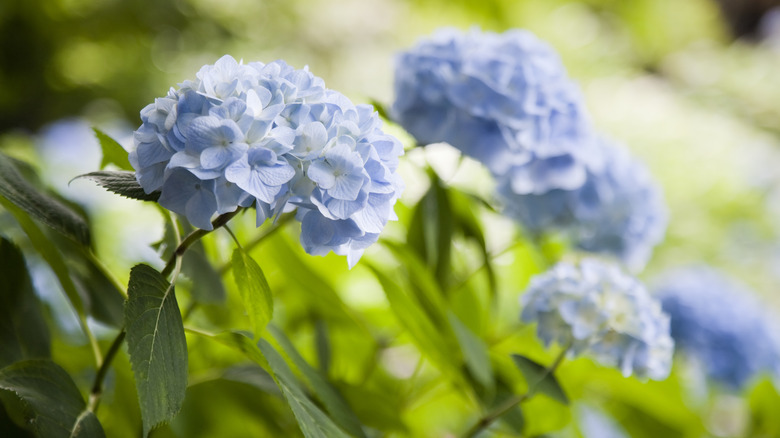The term “old wood” refers to the ways that some types of hydrangeas form new buds. Panicle hydrangeas, commonly grown in the US, form buds in the spring on new stems (or “new wood”) and produce flowers in summer. Macrophylla or bigleaf hydrangeas (which include pink and blue varieties) usually form buds on the stems of the previous season, which then mature and open in summer. There are various benefits to growing different kinds of hydrangeas depending on your climate, growing zone, and personal preferences. One benefit of “old wood” hydrangeas is that they usually require much less pruning than other varieties.
Old wood hydrangeas (also known as French hydrangeas) are called by this name because the stems turn woody over time. Flower buds grow directly on the sides of the stem. The buds can grow fairly large, making them easy to see when pruning, so you won’t accidentally cut them off. Some gardeners believe that these varieties need no pruning at all. However, occasional pruning to remove damaged stems may be necessary from time to time.
Over time, the woody stems of your bigleaf hydrangea may dry out and become brittle, which usually means these parts of the stem will not produce new buds. Keep an eye on them, and if they fail to produce buds by spring, prune these stems back. This will keep your hydrangea shrub looking neat and make room for new growth.
Old wood hydrangeas are low maintenance and bloom quickly

Old wood hydrangeas are usually long-lived and resilient. They will bloom earlier in the season than new wood varieties because they don’t require new growth. However, their early emergence may put them at risk of damage from late-spring frosts. They’re a great choice for people in climates with milder winters, but it’s still possible to make them work in northern climates.
If your old wood hydrangeas aren’t blooming, they may be in a location that is too exposed to cold in the winter. You can try replanting them in a spot that gets more sun in the winter (such as one with southern exposure) or close to a spot that generates a bit more heat. This can be a brick wall exposed to the sun or near (but not directly in front of) a dryer vent. The best case scenario is to locate them where they get a few hours of morning sun and partial shade in the later part of the day. Keep an eye on them in the summer, and if it’s very hot, water them lightly in the morning and maybe again in the evening to keep them hydrated.
As mentioned earlier, one of the main benefits of old wood hydrangeas is that they are generally lower maintenance because they don’t require pruning. But if you want to prune them very lightly to remove the dried flowers or damaged stems, do so in the autumn or in very early spring.
Hydrangeas that produce buds on old and new wood
There are some newer varieties of bigleaf hydrangeas (such as the “Endless Summer” line) that also produce blooms from new stems, making them a good option for growing zones that sometimes have late frosts that can kill spring hydrangea buds. The mix of old and new wood stems gives them a longer flowering season, hence the name “Endless Summer.” These reblooming hydrangeas can be pruned lightly at the end of the season to remove dead flowers. The “Bloomstruck” variety is particularly cold hardy and is a good choice for areas with cold winters.
Pruning these hydrangeas is slightly more complicated than most bigleaf hydrangeas because of the mix of old and new wood. Luckily, it’s not difficult to tell the difference between the two. The “old wood” stems are usually light brown in color and are hard and dense like slender tree branches. The “new wood” stems tend to be green, and softer and more flexible. Both form buds on the sides, and you should look for these buds before pruning to avoid accidentally cutting them.
As your hydrangea produces blooms at the height of summer, sometimes the flowers can weigh down the branches and cause them to droop. You can cut these stems and put the flowers in a vase or even try drying them to preserve them. Check the stem to make sure you don’t cut too many buds that are waiting to flower.
